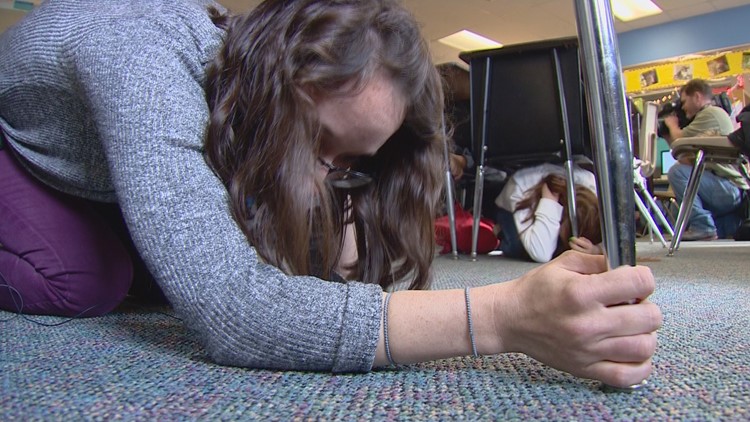Washington state's Great ShakeOut drill was a reminder of what to do in an earthquake.
First, you drop down, get under a desk or a heavy piece of furniture, and hold on to that furniture until the shaking stops.
The drill is practiced widely in schools, and in an increasing number of businesses, government agencies, and even at home.
Around 1.3 million people in the state participated in Thursday's earthquake drill, according to Washington’s Emergency Management Division. It served as a reminder that Washington has the nation’s second highest earthquake risk after California.
The risks are multiple, from a magnitude nine subduction zone earthquake along the coast followed by a tsunami, to major crustal faults under the most populated areas of Puget Sound including the Seattle, South Whidbey, and Tacoma.
Scientists are looking to see if there are other faults.
While the Great ShakeOut only takes a minute, it’s a chance to remind yourself of what else to think about not if, but when a disaster strikes.
Emergency managers are advising that you know of the potential hazards where you live and work, and to sign up for earthquake alerts and warnings.
You should also have a plan in place.
Talk with your family about where to meet and how to communicate. Contacting and checking on family members can often be done by having an out-of-state friend or family member everybody knows to call.
You should also build disaster kits for your home. Each kit should have enough supplies to keep you going for at least two weeks, and even longer in coastal communities.
Another good plan is to map your neighborhood and have a block meeting where you get to know your neighbors. Identify who might need help in a disaster, and be able to help each other with knowledge and even supplies like chainsaws.
You could also volunteer for search and rescue and become an amateur radio operator.
You can find more information at www.shakeout.org/Washington, and www.mil.wa.gov/preparedness.


